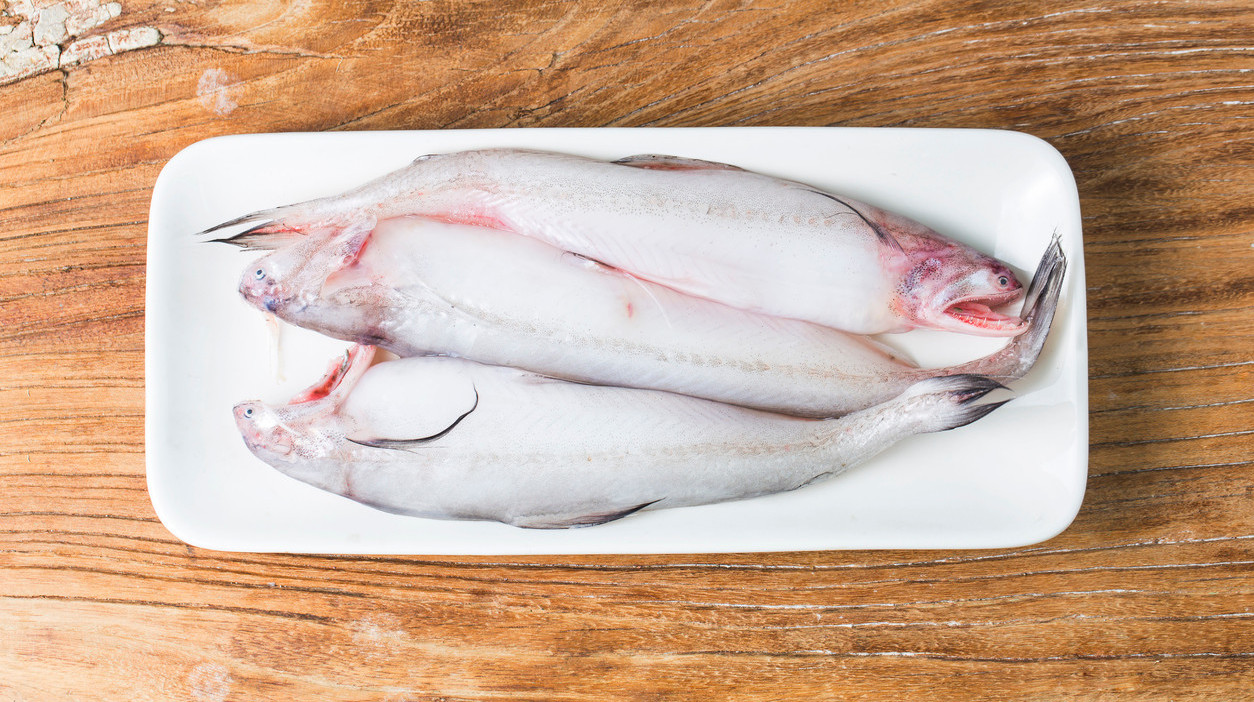TIL Bombay Duck Is Not Actually Duck
Bombay duck is a misleading name in many ways. Bombay is now known as Mumbai, and the animal that is called Bombay duck is not a duck. It is a fish. A really smelly fish. Or, as the 1975 song "Bombay Duck" puts it, "Here's a story simple / of a duck with a little dimple / he's the strangest little duck / this little ducky never clucks."
Bombay duck season comes during the June monsoons when the rain makes it easier to catch the fish. "Fiendishly ugly, it is gelatinous and pink-skinned with a gaping maw," Meher Mirza writes in a piece for the BBC. It is also very smelly, so much so that early British colonists were afraid for their health. Indians eat it dried, or fried, or roasted, or smoked, or stewed, or ground up into chutney, or turned into a pickle. Bombay duck contains multitudes.
Why is it called Bombay duck when it is not, in fact, a duck?
The word could have been a colonisation of the local Marathi name for the fish, bombil, used by the Maharashtrians that the British couldn't twirl their tongues around. Or perhaps the name is an Anglicism born from the Marathi bazaar cry, "bomiltak" (loosely: "here is bombil"). But the most famous explanation is the one set out by Indian-born, British-Parsi writer, Farrukh Dhondy, in his book Bombay Duck. He believes that the name came from the British mail trains that huffed odoriferous orders of dried fish from the city to the interior of India. These wagonloads became known as "Bombay Dak". (The word dak means "mail".)
Bombay duck, Mirza writes, is most associated with the Parsis, descendants of Zoroastrians who emigrated to India from Iran in the 19th century, so much so that Boomla, the Parsi word for Bombay duck, has become a common Parsi surname. To taste Bombay duck the way it was meant to be, you either need to be invited to a Parsi home or visit Britannia & Co Restaurant, a nearly century-old Irani cafe in Mumbai that also serves as a shrine to the British royal family. "Here, it is cloaked in semolina and fried to a crisp on the outside, while its belly stays soft, pliant and collapsing within," Mirza explains. "Elsewhere, in Mumbai's myriad non-Parsi seafood eateries, it would be deboned and cudgelled to flatness for maximum crunch."
Eat this, Mirza writes, and you will understand why the Parsis of Mumbai love Bombay duck so much, they named themselves after it.
